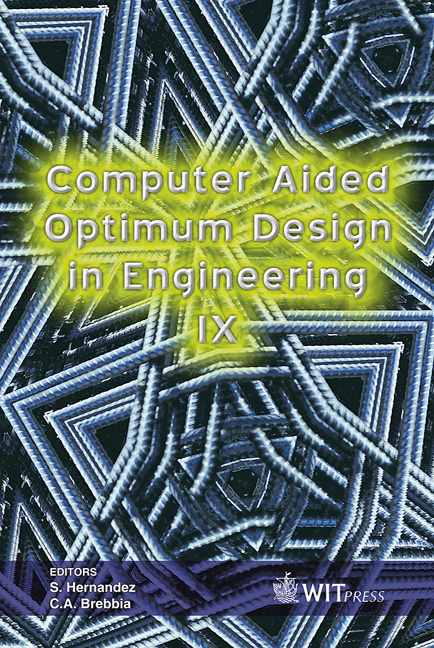The CAD/CAE System Of A Tricone Rock Bit
Price
Free (open access)
Transaction
Volume
80
Pages
8
Published
2005
Size
678 kb
Paper DOI
10.2495/OP050431
Copyright
WIT Press
Author(s)
Z. Wu, V. Thomson, H. Attia & Y. Lin
Abstract
The purpose of this paper is to introduce the CAD/CAE system of a tricone rock bit especially to rock bit designers. The system is integrated with Pro/Engineer (one of best CAD/CAE/CAM commercial software in the world, also called Pro/E), and operated in the Drawing mode of Pro/E. The system is composed of three parts: 2D intermesh design (including parameterised insert section and slots modelling), simulation and optimal design, and the engineering database. One important characteristic of the system is its ability of arranging an insert on the intermesh design of a tricone rock bit with linkage function, which is very useful for engineers. In addition, the function of simulation and optimal design helps designers to greatly shorten the design cycle. A case study shows that the CAD/CAE system can improve the performance of the tricone rock bit and will bring magnificent social and economic efficiency. The system can also output contour data of three cones for 3D solid modelling of the tricone rock bit, which is a basis for the CAM of the tricone rock bit. Keywords: CAD/CAE, tricone rock bit, simulation, intermesh, optimal design. 1 Introduction Tricone rock bit is an important tool in oil and gas drilling, and accounts for a large number of shares in the rock bit market of the world. Therefore rock bit engineers have been looking for better ways to make rock bits faster, more efficient and more durable. The cutting structure of tricone rock bit interacts with rock directly, and its performance affects the rate of penetration (ROP) greatly. Thus it is the key object that we study. Before microcomputers are widely used, designing bits is usually based on repeated trial and individual experience of bit engineer, which
Keywords
CAD/CAE, tricone rock bit, simulation, intermesh, optimal design.





